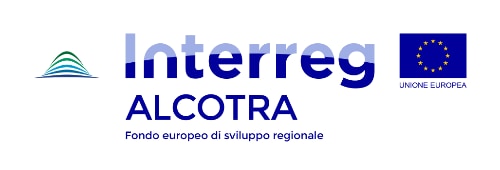Verrès Montjovet
THE WINE ROUTE AND THE CONSULAR WAY OF THE GAULS
A route that traces the path of the Consular Way of the Gauls and the Via Francigena , it recalls the countless transits of men, animals, and goods through impressive and ancient works such as terracing and structures providing connections throughout the Aosta Valley.
From the Verrès train station, one heads to Via Amilcare Cretier crosses the state road, and, continuing on Via delle Scuole, reaches the village of Verrès located at the foot of the imposing fortress built in a strategic position at the mouth of the Val d’Ayas, a cube-shaped structure built at the end of the 14th century by Ibleto di Challant with a purely military function. It was then Renato di Challant in 1536 who renovated the manor’s defensive apparatus, adapting it to the use of modern firearms. Inside, noteworthy are the courtyard’s stone staircase, set on rampant arches, and the decoration of the windows, doors, and monumental chimney brackets, due to excellent artistry.
One crosses the village via the bridge that spans the Evançon stream and can reach, with a short detour, the Collegiate Church of Saint Gilles , whose canons of Saint Egidio are first mentioned in 1050 in Verrès. It is the seat of the parish and includes structures built between the 11th and 18th centuries. The main building, made of exposed stone, and the adjacent prominent bell tower were built in 1512 by Provost Charles of Challant.
Continue, then, toward the hamlet of Torille and follow the signs of the Via Francigena, which, with a stone mule track, climbs upstream of the village and crosses terraces cultivated in part with vines: now the route becomes a pleasant path that descends into an oak forest and continues in the direction of Montjovet.
We pass through the pretty village of Reclou, with its colorful houses, and head toward the main town, where we encounter the Parish Church of the Nativity of Mary , built around 1830; just near the church, we pass by a monumental plant, a Wisteria about 200 years old.
Proceeding in the direction of Frazione Toffo , one crosses a terraced area halfway up the hillside with cultivations of vines and aromatic plants such as sage and rosemary. In this section, the path allows the Consular Way of the Gaul s route, built by the Romans in the 1st century BC, to be recognized. Sections of the roadway are visible, characterized by a chiseled rock bottom in which the furrows left by the passage of chariots are recognizable, an indelible sign of the course of thousands of men, animals, and goods that moved along this route for several centuries. We now reach the hamlet of Barmas, whose name derives from the peculiar constructions carved out under large protruding rocks called “Barme” or “Balme”: the rock sometimes serves as a roof or even replaces a wall of a dwelling or stable. You may even notice some palm trees surviving in this mainly sunny area with a mild climate, even in winter.
We descend at this point to the village of Montjovet , located on the bank of the Dora Baltea and dominated by the imposing castle of Saint Germain . The town has always strategically controlled the road system; a mule track passed over the ancient wooden bridge and continued toward Saint Vincent. Strolling through the alleys of the village, one can see several mansions embellished with windows with decorated arches, molded portals, and frescoes on the facades; of particular interest is a building with a portal dated 1585 and which, at the end of the 19th century, became a hotel housing the laborers who worked on the construction of the Ivrea- Aosta railway. The medieval Chapel, built between the 11th and 12th centuries, was dedicated to St. Mary and served as the parish church until 1843. Only the bell tower with mullioned openings and a hexagonal spire remains of the ancient building; the church was demolished and rebuilt in the 18th century and is currently dedicated to St. Roch.
The route ends in front of the Napoleon Hotel, where you can catch a bus back to Verrès.
The route is feasible on foot. For those who wish to use bicycles from Torille to the main town of Montjovet, it is possible to ride the country roads along the Dora Baltea, while from the Nativity of Mary parish church, the pedestrian route described above can be followed.
Trail length: 10.62 km
Positive elevation gain: 480 meters
Negative elevation gain: 339 meters

